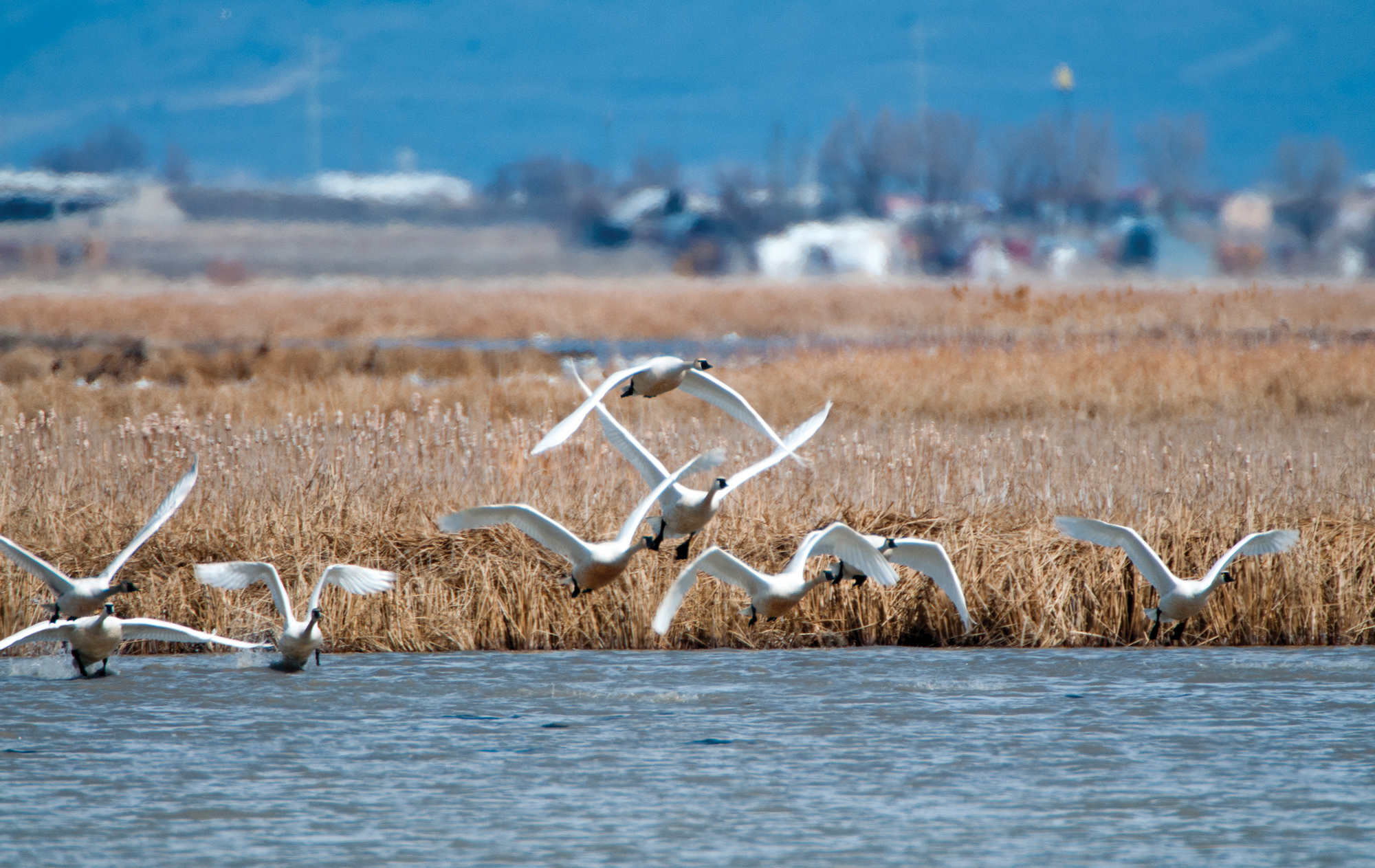
Where To See Wild Swans Migrating Through Utah In March
– Department of Wildlife Recourses –
OGDEN — Wild swans are currently winging their way through Utah, making March one of the best times of the year to see them.
Both tundra swans and trumpeter swans stop in Utah’s wetlands for some much-needed rest and refueling during their annual spring migration. The migration takes the swans from wintering grounds in California to nesting sites in Canada and Alaska.
“Swans are graceful, beautiful birds,” Utah Division of Wildlife Resources Regional Outreach Manager Mark Hadley said. “And you’ll have no problem spotting them: they’re huge and almost pure white in color. If you’ve never seen swans in the wild before, I encourage you to get out and see them this spring.”
The DWR will not be hosting any viewing events this year, but there are plenty of opportunities to get out and see swans on your own. Two places in Box Elder County — the Salt Creek Waterfowl Management Area and the Bear River Migratory Bird Refuge — are typically great places to see swans. Make sure to bring binoculars or a spotting scope so you can get a good view of the birds.
While it may be more difficult to see migrating swans from this location, the DWR’s George S. and Dolores Doré Eccles Wildlife Education Center in Davis County offers two taxidermied tundra swans you can see up close.
If you’re driving around looking for swans, please do so safely. Don’t stop in the middle of the road if you see a swan. Instead, pull completely off the road before viewing. Your safety, and the safety of other motorists, comes first.
Salt Creek Waterfowl Management Area
The Salt Creek WMA is about 12 miles northwest of Corinne. The Compton’s Knoll viewing area — a small hill on the southeast side of the WMA — is an excellent place to view swans and other wildlife. The rest of the WMA is closed until September, so please stay behind closed gates and view swans only from Compton’s Knoll.
Bear River Migratory Bird Refuge
Managed by the U.S. Fish & Wildlife Service, the Bear River Migratory Bird Refuge Auto Tour Route is about 12 miles west of Brigham City’s I-15 exit 363 on West Forest Street. Travel on West Forest Street until you come to a large parking area with a viewing tower, then follow the signs. The 12-mile auto tour route will take you through the heart of the refuge. You should see plenty of swans in the wetlands along the driving route.
Eccles Wildlife Education Center
The DWR’s Eccles Wildlife Education Center is part of the Farmington Bay WMA. The center features two tundra swan mounts and other displays about wetlands in the area.
The WMA is closed to vehicle traffic from March 1 until September, but the education center — located at 1157 S. Waterfowl Way in Farmington — is open Tuesday to Saturday from 9:30 a.m. to 4:30 p.m.



